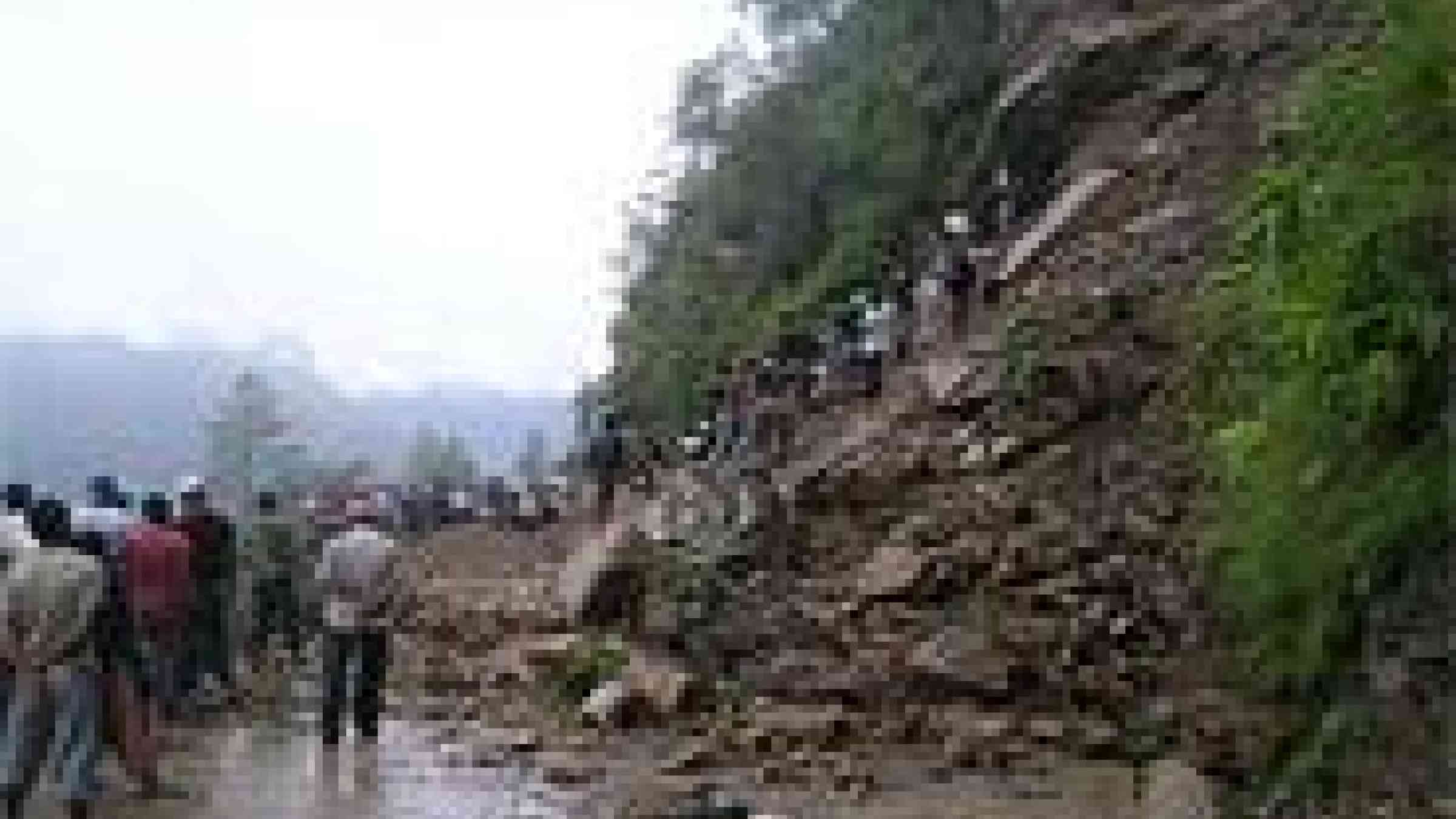
Every year, floods and landslides cause 300 deaths in Nepal and economic damages exceeding US $10 million. A lack of focus on investing in disaster risk reduction has put development efforts at risk. Recognising this gap, the Government of Nepal launched the Nepal Reduction Consortium (NRRC), which identified 5 flagship priorities for disaster risk reduction. Under the NRRC, Community Based Disaster Risk Reduction (CBDRR) is a priority.
Flagship 4 of the NRRC, which focuses on CBDRR in Nepal, has created in consensus with CBDRR stakeholders minimum characteristics of a disaster resilient community. Among these characteristics is an inclusive community based early warning system at VDC/ward, district, regional & national level.
Early warning systems serve to provide communities with advanced information on flood risks in order to give people time to effectively respond. Engaging communities with early warning systems is critical to ensure sustainability. Practical Action has been a leader on community based early warning in Nepal. Their work in Banke District, which is supported by the European Commission Humanitarian Aid & Civil Protection under the DIPECHO program for South Asia, proved to be critical in protecting communities from floods.
On 3 August 2012 in Banke District, communities were required to utilise early warning to prevent a major disaster. With incessant monsoon rains pushing water of the West Rapti River to critical levels, reaching 7.24m, a flood was imminent.
Fortunately for downstream communities, the early warning system was activated, as planned at the first warning level. An electronic display board at the District Administration Office (DAO) sounded a siren when water reached a critical level. Once the siren sounded, Mr. Dhundi Raj Pokharel, the Chief District Officer (CDO), advised security forces to disseminate information to police posts in vulnerable communities.
According to Mr. Pokharal, the early warning system was “a great achievement. I am happy that despite the huge flood, there were no human casualties.” Lives were saved in downstream communities in Nepal and India because of “timely information.”
In Holiya, one of the vulnerable VDCs to floods in the area, police forces were dispatched with rope and life jackets to prepare for the oncoming flood.
Different media outlets, such as radio FMs and local television broadcasted an alert to advise individuals of the flood threat.
At the community level, taskforces at five VDCs affected by the West Rapti River sprung into action, thanks to the CBDRR projects by Practical Action and other partners that have been operating in those communities. For example, Pralad Dhobi, a member of the communication team in Holiya, immediately alerted his community to the flood threat by blowing a hand operated siren.
Mr. Dhobi said the early warning system in Holiya “saved lives and saved valuable properties because communities got flood information.”
In other VDCs, members of disaster management committees and communication teams were able to alert their communities and ensure that no one died during the flood. In Binauna, everyone was evacuated and the life saving boats were used to recover valuables, such as documents and stored grains.
In Nepal, where an average of 2 people dies every day to natural disasters, the impact of the early warning system for the West Rapti River has been remarkable.
The success of the early warning system in Banke during the West Rapti flood saved the lives of many. This highlights the importance of preparing communities to natural disasters. Under the Nepal Risk Reduction Consortium, CBDRR projects across Nepal are ensuring that communities can protect themselves and their livelihoods from the impact of natural disasters.
